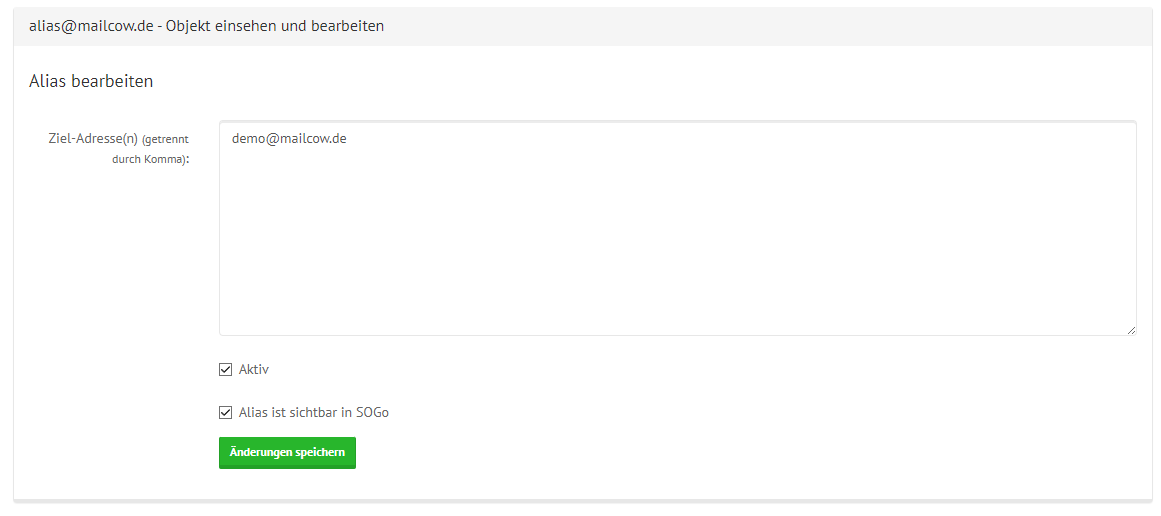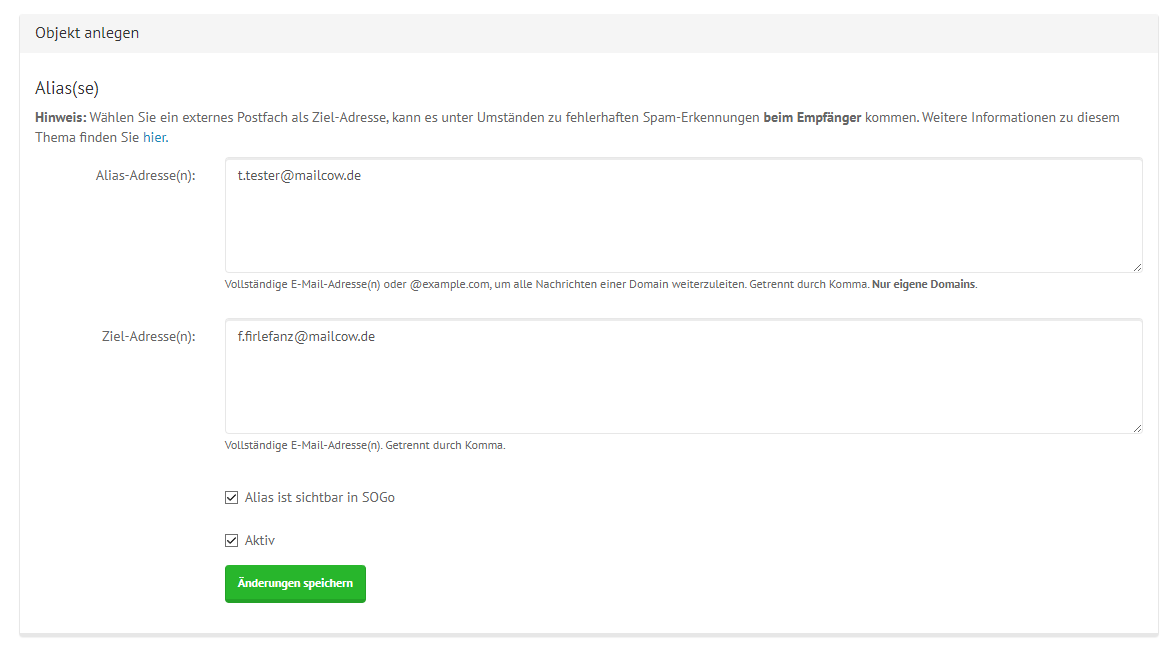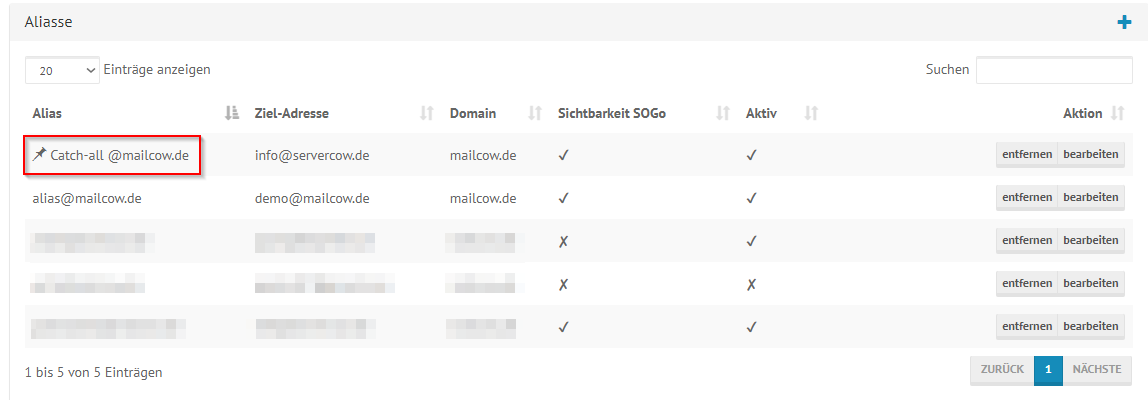Manage (Mailbox) Aliases
Notice
The Images used in this page are used from the German version and will change in the near future.
What are (Mailbox) Aliases? And what are they used for?¶
A mailbox alias (hereafter referred to simply as an alias) is an additional identifier for a "virtual mailbox" that points to a real mailbox. Emails sent to this alias are delivered to the specified real mailboxes.
Aliases can be assigned to either one or multiple real mailboxes.
Example
t.tester@example.com is configured as an alias for f.firlefanz@example.com. If an email is sent to t.tester@example.com, it will be delivered to the mailbox configured in the alias, which is f.firlefanz@example.com.
If the target mailbox does not exist and there is also no catch-all alias, the email will be discarded, and the sender will receive an appropriate notification.
Aliases are commonly used for the following purposes:
- Team Communication: An alias like support@ forwards inquiries to all members of a support team without sharing individual addresses.
- Ease of Recognition: A shorter alias like hr@ can represent human.resources@, making it easier for recipients to find and enter the correct address.
- Spam Management: An alias can be used for external registrations, e.g., newsletter@, to protect the primary address from unwanted emails and maintain organization.
Special Case: Catch-All Alias¶
Aliases can also act as a "catch-all" for emails sent to addresses for which no direct mailbox has been created. A common example is typos in names or similar scenarios.
For such cases, so-called catch-all aliases are used, which accept any emails sent to an undefined mailbox (or alias).
Recommendation
We recommend using one catch-all alias per domain to ensure you receive all emails addressed to you.
In the section Create an Alias, you will learn how to create such a catch-all alias in the mailcow Groupware.
Create an Alias¶
In the mailcow Groupware, you can create unlimited aliases. The limiting factor is the mailboxes the alias points to.
You can create aliases similarly to domain aliases.
Scroll to the Aliases section on the page and click the small + symbol to add one.
A configuration window will open, which you can fill with your data:
Click Save Changes to create the alias.
Important
You can specify external mailboxes as targets, but please note that this may lead to incorrect spam ratings for the recipient. Read more about this topic here.
Note
The selection box "Alias is visible in SOGo" determines whether aliases pointing to your mailbox are displayed when using out-of-office agents or composing new emails via the SOGo webmail client.
Create a Catch-All Alias¶
For a catch-all alias, always use the syntax @domain.tld, e.g., @example.com if your domain is example.com. An explanation of the catch-all alias can be found above.
Did you know?
You can identify a catch-all alias in the alias section of the mailcow Groupware without needing to edit it:
Edit an Alias¶
To edit an alias, select the "edit" button in the alias menu.
Here you can:
- Change the mailboxes the alias applies to. (Please ensure separation with commas)
- Activate/deactivate the alias.
- Allow/deny the alias to be displayed within SOGo.
Note
The selection box "Alias is visible in SOGo" determines whether aliases pointing to your mailbox are displayed when using out-of-office agents or composing new emails via the SOGo webmail client.

Delete an Alias¶
To delete an alias, select the "remove" button in the alias section.
A window will open, warning you about the deletion.
Confirm the deletion by clicking Remove:
Caution
Clicking Remove only deletes this alias permanently from the mailcow Groupware system! Email data will not be deleted! Please proceed with caution!


